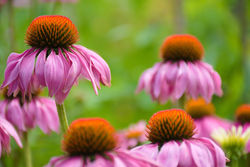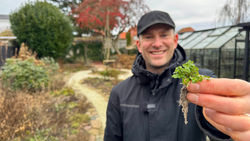How to grow Hydrangea Macrophylla from cuttings (the easy way)
- Lars Wildes
- Jul 4, 2024
- 3 min read
Hydrangea macrophylla, commonly known as bigleaf hydrangea, is a popular garden shrub renowned for its large, stunning blooms that range in color from blue and pink to purple and white. Growing hydrangeas from cuttings is a cost-effective and rewarding way to propagate these beautiful plants.
In this video and guide, we'll explore the process of growing Hydrangea macrophylla from cuttings, including detailed information about the plant itself.
About Hydrangea Macrophylla
Height: Typically grows between 3-6 feet (0.9-1.8 meters) tall.
Flowers: Large, rounded flower clusters (mopheads) or flatter clusters (lacecaps). Flower color can vary based on soil pH, with blue flowers in acidic soil and pink in alkaline soil.
Bloom Time: Blooms from late spring to early autumn.
Foliage: Glossy, dark green leaves that are oval-shaped with serrated edges.
Hardiness Zones: Suitable for USDA zones 6-9.
Growing Conditions
Light: Prefers partial shade, especially in hot climates. It can tolerate full sun in cooler areas.
Soil: Prefers moist, well-drained soil. Soil pH can affect flower color.
Watering: Requires regular watering, especially during dry periods.
Fertilizing: Benefits from balanced, slow-release fertilizers applied in spring and summer.
Step-by-step guide to growing Hydrangea Macrophylla from cuttings
Here's what you'll need:
Sharp pruners or scissors
Rooting hormone (optional... we never use it)
Small pots or seed trays
Potting mix or a mixture of peat and perlite
Clear plastic bag or a plastic container
Watering can or spray bottle
Labels and a pen
How to:
1. Select Healthy Cuttings
Choose a healthy, non-flowering stem from your Hydrangea macrophylla plant.
The best time to take cuttings is in late spring to early summer.
Cut a 4-6 inch (10-15 cm) long piece just below a leaf node.
2. Prepare the Cuttings
Remove the lower leaves from the bottom half of the cutting.
Leave only two or three pairs of leaves at the top.
If the leaves are large, cut them in half to reduce water loss.
3. Apply Rooting Hormone
Dip the cut end of the stem into water and then into rooting hormone powder. This step is optional but might increase the chances of successful rooting. Please note that we've never used this and have always had success with our cuttings.
4. Plant the Cuttings
Fill small pots or a seed tray with a potting mix or a mixture of peat and perlite.
Make a hole in the soil with a pencil or your finger and insert the cutting around the edge of the pot.
Firm the soil around the cutting to ensure it stands upright.
5. Create a Humid Environment
Water the cuttings thoroughly.
Cover the pots with a clear plastic bag or place the seed tray inside a plastic container with a lid to create a mini greenhouse.
Ensure the plastic does not touch the leaves of the cuttings. You can use sticks or wire hoops to keep the plastic away from the leaves.
We keep ours in our glasshouse. The options above are great if you do not have one.
6. Provide Proper Care
Place the cuttings in a bright, indirect light location.
Maintain soil moisture by misting with a spray bottle or watering as needed. Avoid overwatering, which can cause rot.
Open the plastic bag or container occasionally to allow air circulation and prevent mold.
7. Monitor Root Development
After 2-3 weeks, check for root development by gently tugging on the cuttings. If you feel resistance, roots have formed.
Once the cuttings have a strong root system, they can be transplanted into larger pots.
8. Transplanting
Prepare larger pots with potting soil.
Carefully transplant the rooted cuttings into the new pots.
Water thoroughly and place in a location with indirect light.
After a week or two, the plants can be permanently transplanted into the garden or kept in pots.
Propagating Hydrangea macrophylla from cuttings is a rewarding process that allows you to expand your garden with beautiful, vibrant hydrangeas. By following these steps, you can successfully grow hydrangeas from cuttings and enjoy their stunning blooms for years to come. Happy gardening!
We’d love to hear about your experiences with propagating hydrangeas. Share your tips and success stories in the comments in the YouTube video and connect with fellow gardening enthusiasts!







Comentários